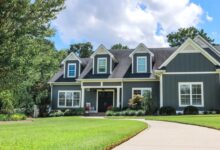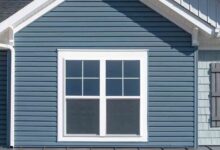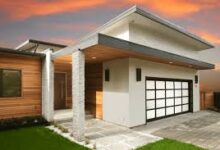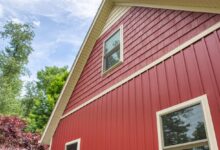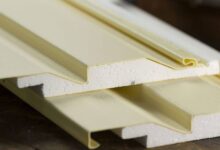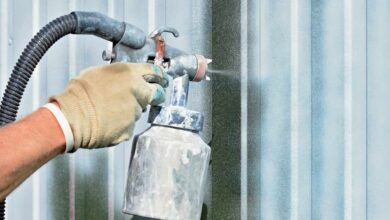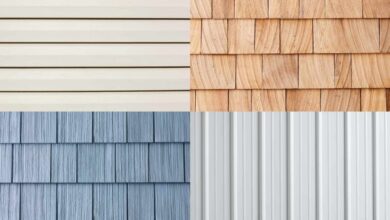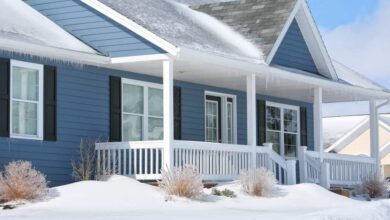Cost of Replacing Siding on A Two-Story House
Replacing the siding of your two-story house is a significant investment that can greatly impact both the curb appeal and the value of your home. Whether your existing siding is worn, damaged, or outdated, updating it can also improve the overall energy efficiency of your property. But, as with any major home renovation project, understanding the full cost, materials, labor requirements, and benefits of replacing your home’s siding is crucial to making an informed decision.
In this comprehensive guide, we’ll explore everything you need to know about replacing siding on a two-story house, including product options, pricing estimates, factors that affect costs, and where to buy siding materials. Whether you’re looking for vinyl, wood, or fiber cement siding, this guide will help you find the right material for your project.
What Affects the Cost of Replacing Siding on a Two-Story House?
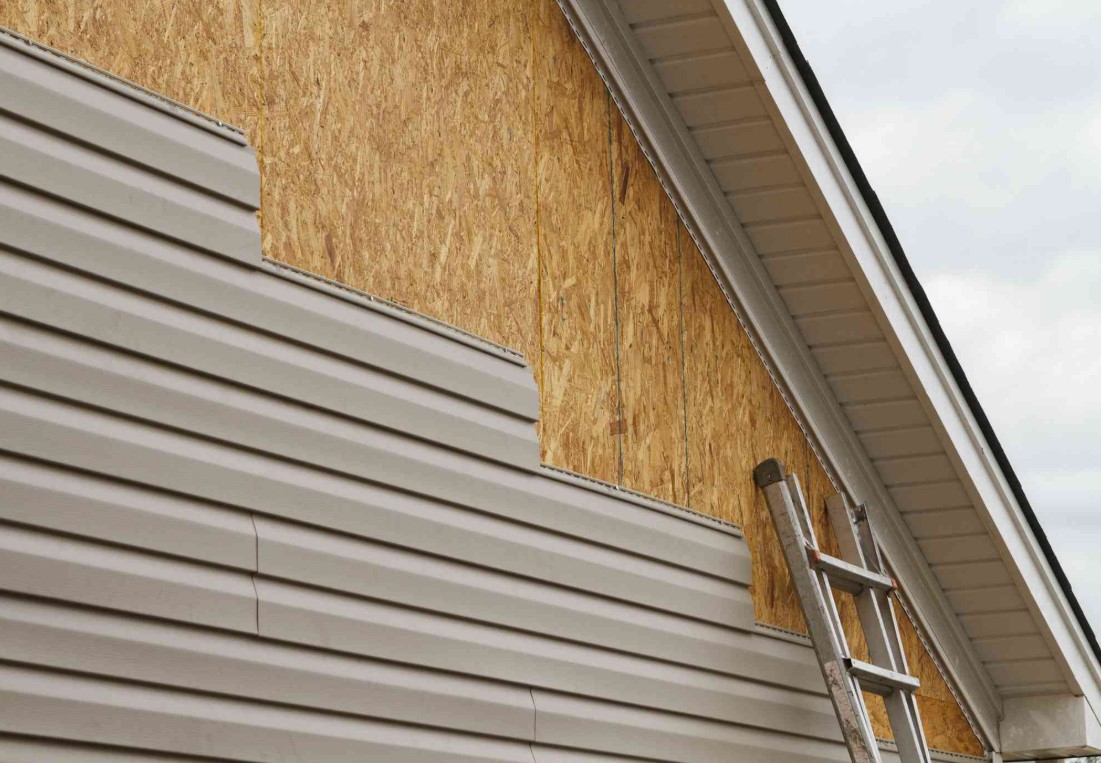
When it comes to replacing siding on a two-story house, there are several factors that can influence the total cost. Understanding these factors will help you better plan for your siding project. Below are some of the key variables that impact the overall cost:
Size of the House
The square footage of your home is one of the most significant cost factors. A larger home will require more materials, which naturally drives up the cost. As a general rule, the larger the surface area, the higher the cost.
Type of Siding Material
The type of siding material you choose will directly affect the total price. Common options include vinyl siding, wood siding, and fiber cement. Each material has a different cost per square foot, and some may also have higher installation labor costs.
Labor Costs
Labor costs for installing siding can vary depending on the complexity of the installation and your location. On average, labor costs can range from $2 to $5 per square foot, depending on factors such as the type of siding and the labor market in your area.
Removal of Old Siding
If you have existing siding that needs to be removed, there will be additional costs for this service. Typically, the removal of old siding can cost anywhere from $1 to $3 per square foot, depending on the material and ease of removal.
Accessibility and Home Design
If your home has complicated design features or is difficult to access, such as a steep roofline or high-set windows, this may increase labor costs. Contractors will need to work carefully to install the new siding, which can require extra time and safety equipment.
Types of Siding Materials for a Two-Story House

When it comes to replacing the siding on your two-story house, selecting the right material is crucial not only for the look and feel of your home but also for its longevity, energy efficiency, and overall protection. There are several siding materials to choose from, each with its unique characteristics. Below, we delve into the most popular options, including their benefits, challenges, and pricing. These materials will provide you with different aesthetics, durability levels, and costs, allowing you to make an informed decision based on your specific needs.
Vinyl Siding
Vinyl siding is one of the most widely used siding materials for homes across the United States, especially for two-story houses. It’s favored for its affordability, versatility, and relatively low-maintenance characteristics.
- Durability: Vinyl siding is designed to withstand the elements, including rain, snow, and UV rays, without deteriorating easily. High-quality vinyl siding can last up to 30 years, depending on environmental factors. However, extreme temperatures can cause it to become brittle and crack.
- Cost: Vinyl siding is the most budget-friendly option for replacing the siding on a two-story house. Typically, it costs between $2 to $7 per square foot, depending on the quality, thickness, and brand of vinyl. Higher-end options, such as insulated vinyl siding, might cost a bit more but can offer additional benefits like better energy efficiency.
- Maintenance: One of the main advantages of vinyl siding is its low maintenance needs. Unlike wood, vinyl doesn’t require painting, and it resists fading, cracking, and peeling. However, it can accumulate dirt and stains, which can be easily cleaned with a hose or pressure washer. In extreme climates, such as areas with intense sun or harsh winters, vinyl may need occasional repairs.
- Aesthetic Options: Vinyl siding comes in a wide range of colors, textures, and finishes. Whether you’re interested in a classic look or a more modern design, you’ll find an option that suits your home. Additionally, vinyl siding can mimic the look of wood or other more expensive materials at a fraction of the cost.
- Pros:
- Affordable initial investment.
- Low maintenance and easy to clean.
- Energy-efficient when combined with foam insulation.
- Wide range of colors and styles to match different home designs.
- Cons:
- Can crack or warp in extreme temperatures, particularly in very cold conditions.
- Fading can occur over time, especially in regions with intense sun exposure.
- Not as customizable as other materials, such as wood or fiber cement.
Best Use Case for Vinyl Siding: Vinyl siding is ideal for homeowners looking for an affordable, low-maintenance option that still offers good durability. It’s perfect for homes in regions with moderate climates where extreme temperatures or natural disasters like hurricanes or hailstorms are not common.
Fiber Cement Siding
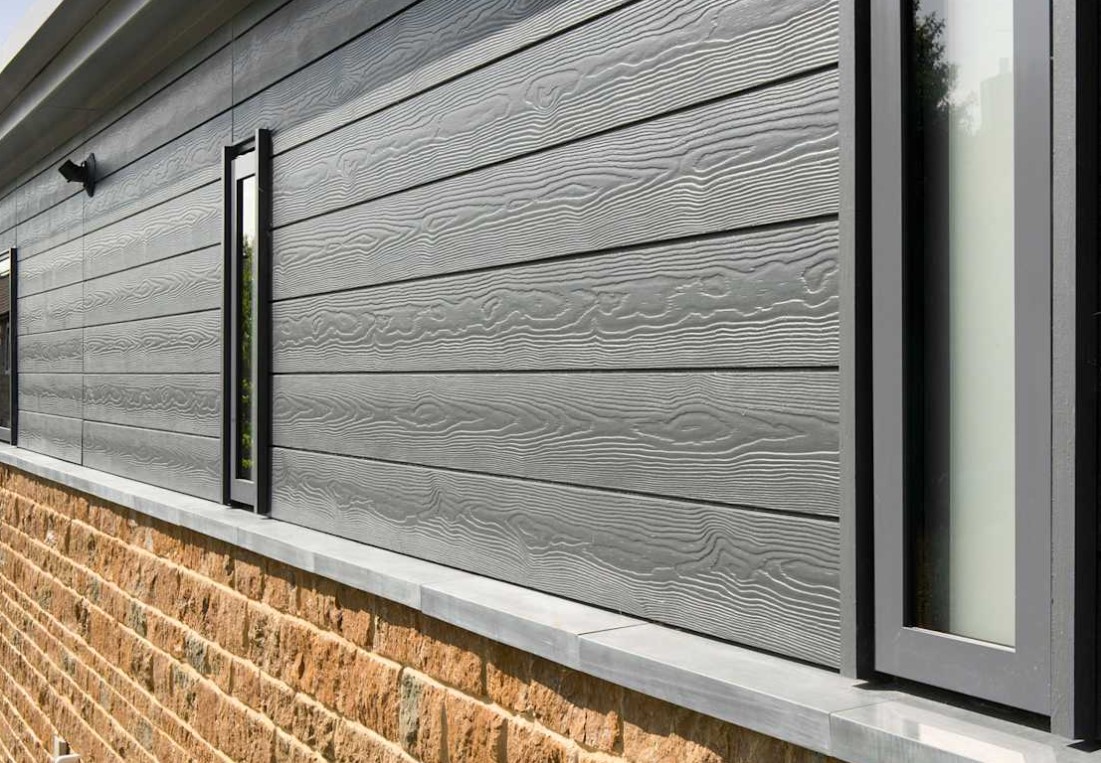
Fiber cement siding is made from a mixture of wood fibers, sand, and cement. This material has grown in popularity due to its durability, ability to mimic other materials (like wood or stucco), and overall strength. It is a favorite among homeowners who want a more premium siding option that doesn’t require the upkeep of wood.
- Durability: Fiber cement siding is incredibly durable and resistant to harsh weather conditions, including high winds, extreme heat, and heavy rain. Additionally, it’s resistant to termites and rot, which are common problems with wood siding. Fiber cement also performs well in areas prone to wildfires since it’s non-combustible.
- Cost: Fiber cement siding is more expensive than vinyl but offers significant benefits in terms of durability and long-term value. On average, fiber cement siding costs between $5 to $12 per square foot, depending on the brand, finish, and style. Although it may come with a higher upfront cost, the material’s longevity can save homeowners money in repairs and maintenance over the years.
- Maintenance: Fiber cement requires less maintenance than wood but more than vinyl. It needs to be repainted every 5 to 10 years, depending on the climate and exposure to the elements. The good news is that it holds paint well, so once applied, it can last for a long time without chipping or peeling.
- Aesthetic Options: One of the main appeals of fiber cement is its ability to mimic the look of other, more expensive materials like wood or stone. It can be designed to resemble traditional wood siding, stucco, or even brick. Additionally, fiber cement comes in a variety of colors, styles, and finishes, giving homeowners a wide array of design choices.
- Pros:
- Extremely durable, resistant to fire, termites, and rot.
- Non-combustible and weather-resistant, making it suitable for extreme climates.
- Mimics the look of other high-end materials, such as wood and stucco.
- Low maintenance compared to wood siding.
- Cons:
- Higher initial cost compared to vinyl.
- Requires professional installation due to its heavy weight.
- Needs repainting every 5-10 years.
Best Use Case for Fiber Cement Siding: Fiber cement is ideal for homeowners who are looking for a premium siding option that offers superior durability and low maintenance. It’s a great choice for areas that experience severe weather conditions, such as hurricanes or wildfires, and for homeowners who prefer the aesthetic of wood without the upkeep.
Wood Siding
Wood siding offers a natural and classic look that’s hard to replicate with other materials. It’s a top choice for homeowners who want their homes to exude charm and character. While wood siding requires more maintenance, it remains a favorite for those who value aesthetics.
- Durability: Wood siding, when properly maintained, can last for decades. However, it is susceptible to damage from termites, rot, and weathering. Over time, exposure to the elements can lead to discoloration, cracking, and warping. Proper care, including sealing, staining, and regular inspections, can help prolong the life of wood siding.
- Cost: Wood siding is more expensive than vinyl but generally less costly than fiber cement. Depending on the type of wood you select, such as cedar or redwood, costs can range from $4 to $9 per square foot. The price will also depend on whether you opt for a traditional lap siding style or a more intricate design.
- Maintenance: One of the significant downsides of wood siding is the amount of maintenance it requires. To keep it looking its best, wood siding must be regularly stained or painted to protect it from moisture, sun damage, and insects. Homeowners may need to repaint every 3 to 7 years, depending on the climate and exposure.
- Aesthetic Options: Wood siding has an undeniable natural beauty and is available in a variety of styles, including vertical and horizontal planks, shingles, and shakes. The wood grain adds texture and warmth, making it an ideal option for homeowners looking for an organic, rustic feel. Additionally, wood can be stained in a range of colors, offering more customization than vinyl.
- Pros:
- Timeless, natural aesthetic that enhances curb appeal.
- Offers great insulation properties.
- Can be customized with different stains, paints, and finishes.
- Cons:
- Requires regular maintenance, including painting and sealing.
- Prone to rot, pests, and weather damage if not properly cared for.
- More expensive than vinyl and requires ongoing upkeep costs.
Best Use Case for Wood Siding: Wood siding is best suited for homeowners who want a traditional, high-end look and are willing to invest time and money into its maintenance. It’s perfect for those living in milder climates where the siding isn’t subjected to harsh weather conditions.
Benefits of Replacing Siding on Your Two-Story House
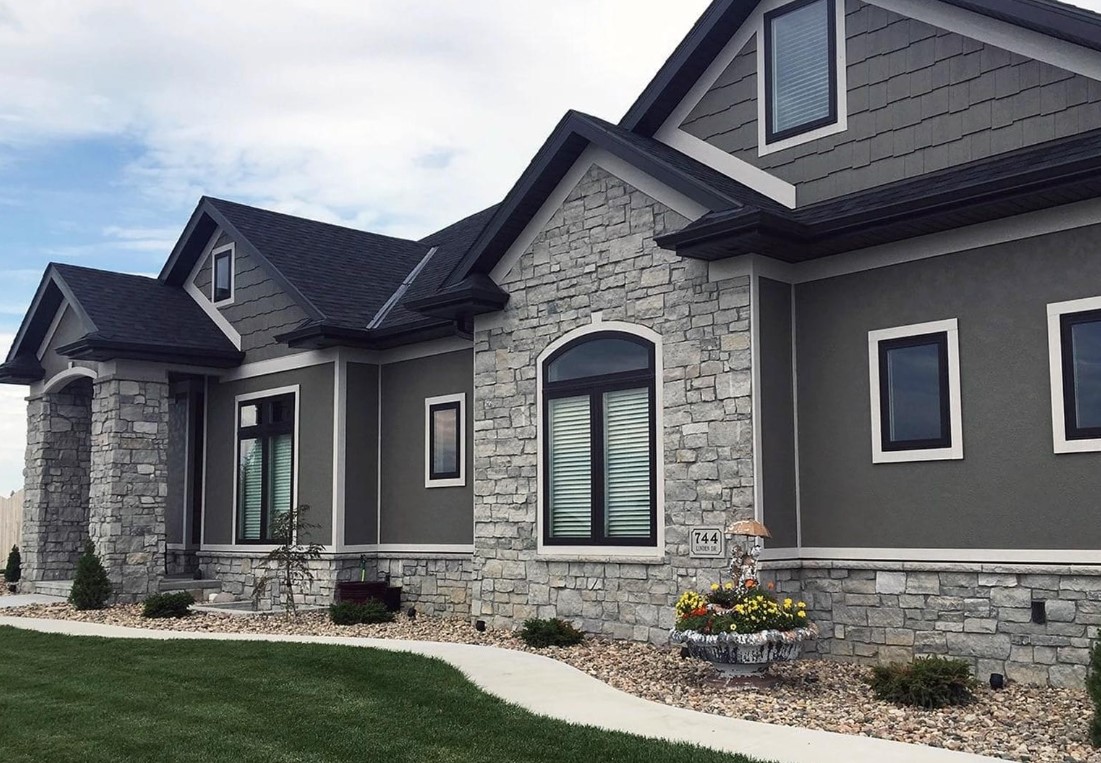
Replacing the siding on your two-story home offers several significant benefits, both functional and aesthetic. Here are some of the primary advantages:
Increased Curb Appeal
One of the most immediate benefits of replacing your siding is the improved appearance of your home. New siding can completely transform the look of your property, making it more modern and appealing. Whether you choose vinyl, fiber cement, or wood, the right siding can enhance the beauty of your home.
Improved Energy Efficiency
Siding, especially when paired with quality insulation, can help improve the energy efficiency of your home. Properly installed siding can reduce heat loss during the winter and keep your home cooler during the summer. This can lead to significant savings on energy bills over time.
Enhanced Protection
New siding provides better protection against the elements, including rain, wind, and snow. Modern siding materials are designed to withstand extreme weather conditions, which helps protect your home from moisture damage and structural issues.
Increased Home Value
Replacing the siding on your two-story house can also increase its resale value. Homes with new, high-quality siding often attract higher offers when sold. Potential buyers are often willing to pay more for a home that requires less immediate maintenance.
Transactional Keyword: How to Buy Siding and Where to Buy
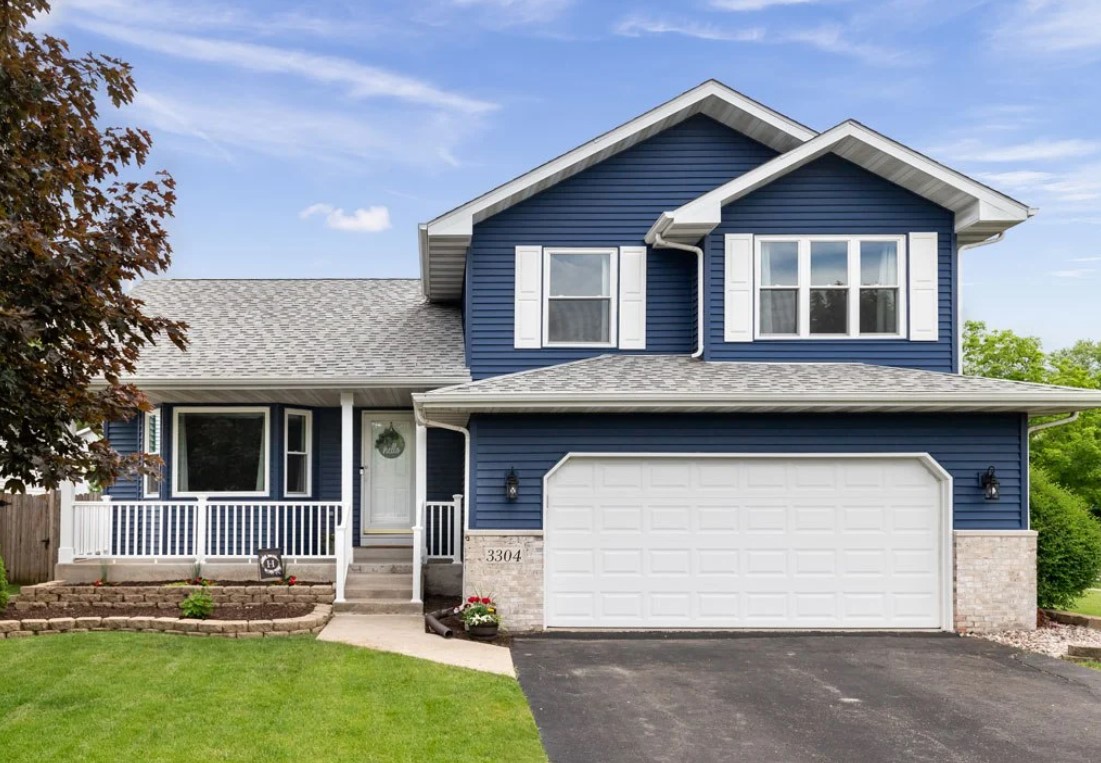
When you’re ready to purchase siding for your two-story house, it’s essential to know where to buy it and how to ensure you’re getting the best deal.
- Where to Buy: You can purchase siding materials from major home improvement retailers such as Home Depot, Lowe’s, or local building supply stores. Online marketplaces such as Amazon also offer a wide selection of siding materials.
- How to Buy: Most retailers offer online ordering with home delivery or in-store pickup options. Be sure to request a sample of the siding material before purchasing to confirm its color and texture.
- Pricing: Vinyl siding typically costs between $2 and $7 per square foot, while fiber cement ranges from $5 to $12 per square foot. Wood siding is priced between $4 and $9 per square foot.
Frequently Asked Questions (FAQs)
1. How much does it cost to remove and replace siding?
The cost to remove and replace siding on a two-story house typically ranges from $5 to $15 per square foot, depending on the material, labor costs, and the complexity of the installation. This includes the cost of removal, disposal, and new siding installation.
2. What is the best siding for a two-story house?
The best siding for a two-story house depends on factors like your budget, climate, and aesthetic preferences. Vinyl siding is the most affordable and low-maintenance option, while fiber cement offers superior durability. Wood siding provides a natural, customizable look but requires more upkeep.
3. How much is vinyl siding labor cost per square foot?
Vinyl siding labor costs generally range from $2 to $5 per square foot, depending on your location and the complexity of the installation. Be sure to get multiple quotes from contractors to ensure you’re getting a competitive rate.
